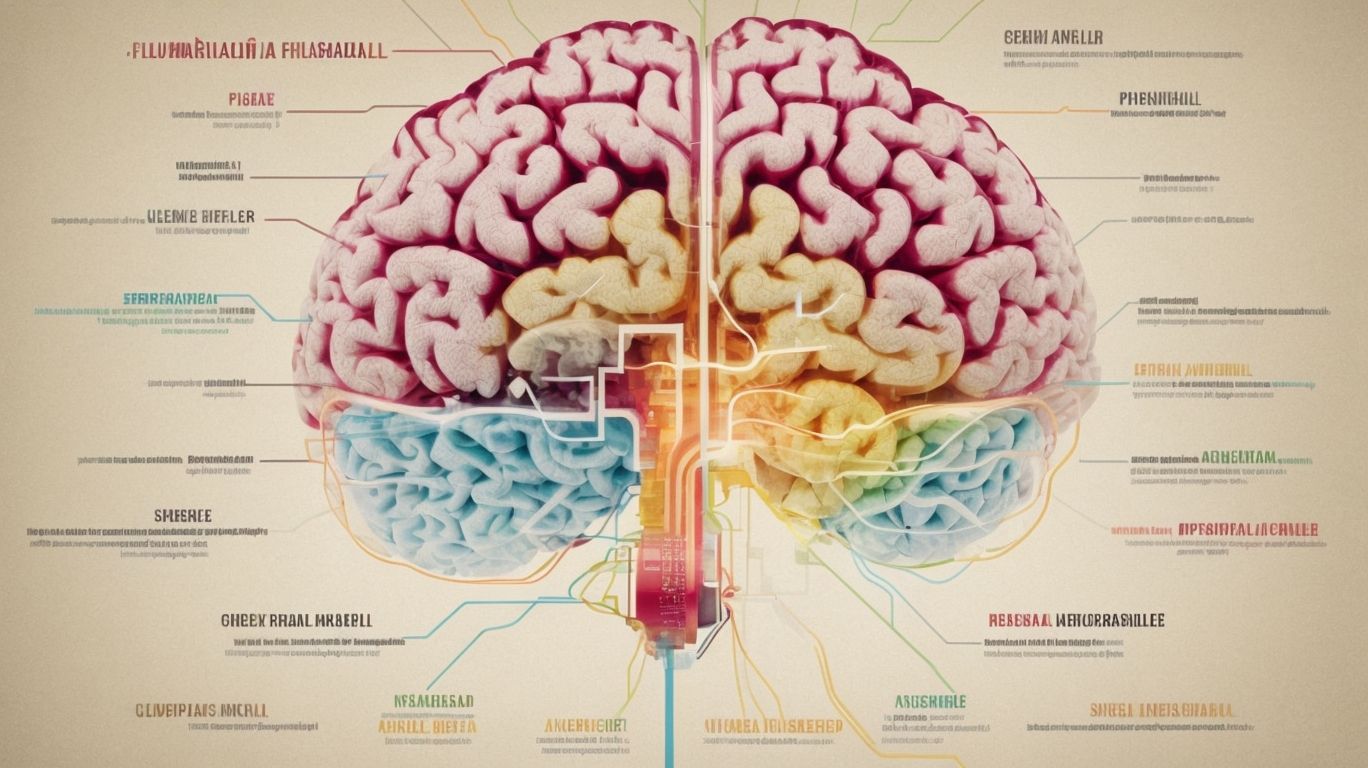Have you ever wondered how psychologists categorize and understand human behavior?
The categorical approach in psychology provides a framework for classifying different aspects of the mind and behavior. In this article, we will explore the basic principles of the categorical approach, its applications in diagnosing and treating mental disorders, and its evolution over time. We will also discuss the advantages, disadvantages, criticisms, and limitations of this approach, as well as its relevance in modern psychology. Join us as we delve into the fascinating world of the categorical approach in psychology.
Contents
- 1 Key Takeaways:
- 2 What Is the Categorical Approach in Psychology?
- 3 How Is the Categorical Approach Used in Psychology?
- 4 What Are the Criticisms of the Categorical Approach?
- 5 What Are the Applications of the Categorical Approach?
- 6 What Are the Limitations of the Categorical Approach?
- 7 How Has the Categorical Approach Evolved Over Time?
- 8 Frequently Asked Questions
- 8.1 What is the Categorical Approach in Psychology?
- 8.2 How does the Categorical Approach differ from other approaches in Psychology?
- 8.3 What are the benefits of using the Categorical Approach in Psychology?
- 8.4 Can the Categorical Approach be applied to all areas of Psychology?
- 8.5 How does the Categorical Approach contribute to the study of human behavior?
- 8.6 Are there any limitations to using the Categorical Approach in Psychology?
Key Takeaways:
What Is the Categorical Approach in Psychology?
The categorical approach in psychology is a method of classifying mental disorders based on distinct categories defined by specific criteria and symptom clusters.
These categories serve as a foundation for distinguishing between different types of mental health conditions. They aid clinicians in diagnosing and treating their patients effectively.
One of the key aspects of this approach is the use of set criteria for diagnosis. This requires individuals to meet a certain number of symptoms within a specified timeframe to receive a particular diagnosis.
This structured method of classification helps standardize the diagnostic process. It ensures consistency and reliability in identifying mental disorders.
Critics argue that the categorical approach may oversimplify the complexity of mental health conditions. This can lead to potential misdiagnosis or overlooking unique individual variations.
What Are the Basic Principles of the Categorical Approach?
The basic principles of the categorical approach involve identifying specific symptoms, applying diagnostic criteria from classification systems such as the DSM or ICD, and ensuring inter-rater reliability in assessments.
When professionals utilize the categorical approach, they carefully pinpoint characteristic signs and symptoms that align with established diagnostic guidelines.
These guidelines, like those outlined in the DSM and ICD, offer structured frameworks for accurate diagnosis and treatment planning. By adhering to these standardized classification systems, clinicians can enhance the objectivity of their assessments and ensure consistency in identifying mental health conditions.
This meticulous approach not only aids in early intervention but also contributes to the overall efficacy of treatment strategies.
How Is the Categorical Approach Used in Psychology?
In psychology, the categorical approach is utilized for diagnosing mental disorders by matching observed symptoms to predefined criteria, though it also faces challenges related to symptom overlap, potential labelling effects, and limitations of classification systems like DSM and ICD.
One of the primary benefits of the categorical approach is its structured method, providing clear diagnostic guidelines for mental health professionals to follow. This helps ensure a standardized approach to diagnosing disorders, facilitating effective communication among practitioners and researchers.
On the downside, the approach’s reliance on discrete categories may lead to issues of symptom overlap, where individuals exhibit symptoms that align with multiple diagnostic criteria. This overlap can create difficulties in accurately pinpointing the specific disorder or disorders present, potentially resulting in misdiagnosis or delayed treatment.
The categorical approach’s emphasis on labeling individuals based on their symptoms raises concerns about stigmatization and the impact of diagnostic labels on individuals’ self-perception and societal perceptions.
What Are the Different Categories Used in the Categorical Approach?
The categorical approach employs various predefined categories based on specific symptoms, classifications, and individual factors that contribute to creating a comprehensive profile of mental disorders within the frameworks provided by DSM and ICD.
These categories encompass a wide array of mental health conditions, ranging from mood disorders such as depression and bipolar disorder to anxiety disorders like generalized anxiety disorder and phobias.
One of the key aspects of this approach is the systematic grouping of symptoms that share common characteristics, aiding in the identification and differentiation of various disorders.
Factors such as the duration, intensity, and frequency of symptoms, as well as their impact on daily functioning, play a crucial role in categorizing mental health disorders.
The establishment of diagnostic criteria, often outlined in diagnostic manuals like DSM and ICD, provides a standardized framework for mental health professionals to make accurate diagnoses and ensure consistency in categorization.
What Are the Advantages and Disadvantages of Using the Categorical Approach?
The categorical approach offers benefits such as clear diagnostic criteria, facilitating communication among professionals, but it also presents limitations like oversimplification of complex conditions and potential misclassification of disorders.
One of the key advantages of using the categorical approach in addressing mental disorders is the standardized assessment procedures it provides. By clearly defining specific diagnostic criteria for each disorder, professionals can conduct evaluations more consistently and accurately. This uniformity also enhances communication among practitioners, as they can easily understand and interpret the same set of criteria when discussing cases or collaborating on treatment plans.
A major drawback of this approach is the tendency towards oversimplification. Mental health conditions are often complex and multifaceted, and categorizing them into distinct groups may ignore the nuances and variations that exist within individuals.
What Are the Criticisms of the Categorical Approach?
Critics of the categorical approach in psychology argue that it may oversimplify complex conditions, struggle with symptom overlap leading to misdiagnosis, and consume significant time due to the rigid application of diagnostic criteria.
One key criticism is that the categorical approach fails to capture the nuances and variations within mental health disorders. It tends to compartmentalize individuals into distinct categories, potentially overlooking the unique blend of symptoms that each person may experience.
This limitation can result in misjudging diagnosis and treatment approaches, especially when symptoms straddle multiple categories. Critics point out that the inherent complexity of mental health issues often presents with overlapping symptoms. This overlap can make it challenging to slot individuals neatly into specific diagnostic categories, leading to incorrect or delayed diagnoses.
Such misdiagnoses can have serious consequences, impacting the efficacy of interventions and the overall well-being of individuals. Another concern raised by critics is the time-intensive nature of utilizing fixed diagnostic criteria. The rigorous application of predefined criteria can be time-consuming for mental health professionals, delaying accurate diagnosis and treatment initiation. This delay can prolong the suffering of individuals seeking help and hinder the timely provision of appropriate care.
Is the Categorical Approach Still Relevant in Modern Psychology?
The relevance of the categorical approach in modern psychology continues to be debated, with proponents advocating for its structured diagnosis using standard inventories, while critics push for a more nuanced dimensional approach reflecting the complexity of mental health conditions.
Proponents of the categorical approach argue that its clear-cut diagnostic criteria provide consistency and reliability in identifying mental health disorders, streamlining treatment plans, and facilitating communication among professionals.
Standardized classifications like the DSM-5 have been instrumental in creating a common language for clinicians and researchers, enabling efficient research and enhancing treatment outcomes.
Critics contend that the categorical approach oversimplifies the diverse nature of psychological conditions and fails to capture the spectrum of symptoms and variations within disorders.
They advocate for a dimensional approach that considers individual differences, emphasizes symptom severity, and recognizes the dynamic nature of mental health.
What Are the Applications of the Categorical Approach?
The categorical approach finds applications in diagnosing and treating mental disorders by providing clear guidelines for identifying specific impairments and tailoring appropriate interventions based on categorized symptoms.
In clinical settings, professionals utilize the categorical approach to systematically classify symptoms and behaviors exhibited by individuals to align them with recognized diagnostic criteria for mental health conditions.
By categorizing symptoms into distinct groups, clinicians are better equipped to assess the severity of impairment levels in patients suffering from various mental disorders.
Moreover, the categorization of symptoms plays a crucial role in guiding treatment strategies by allowing healthcare providers to select evidence-based interventions that target the specific symptom profiles identified.
How Is the Categorical Approach Used in Diagnosis and Treatment of Mental Disorders?
The categorical approach serves as a cornerstone in the diagnosis and treatment of mental disorders through assigning numerical values to symptom severity, utilizing standardized scales to quantify patient conditions, and guiding treatment decisions based on categorized symptom profiles.
By systematically categorizing symptoms, mental health professionals can establish a framework for understanding the underlying factors contributing to the disorder. This method facilitates a more structured evaluation process, allowing for a comprehensive assessment of the patient’s unique symptomatology.
The use of numerical scales further enhances this process, enabling clinicians to objectively measure the severity of each symptom and track changes over time. This quantitative data plays a crucial role in informing treatment strategies, helping practitioners tailor interventions to address specific symptom clusters and their corresponding intensity levels.
How Does the Categorical Approach Help in Understanding Human Behavior?
The categorical approach aids in understanding human behavior by organizing observable symptoms along a continuum of severity, considering various contributing factors that influence the manifestation of mental health conditions within defined categories.
By systematically grouping symptoms based on their similarities and differences, the categorical approach offers a structured framework for mental health professionals to assess, diagnose, and formulate treatment plans for individuals with diverse behavioral patterns.
This method allows for clearer identification of specific disorders, enabling more targeted interventions and better outcomes for patients.
The continuum model for symptom severity further enhances this approach by acknowledging the spectrum of symptom expression and emphasizing the nuanced variations in how mental health conditions may present in different individuals.
What Are the Limitations of the Categorical Approach?
Limitations of the categorical approach include challenges in assessing impairment accurately, difficulties in addressing symptom overlap leading to diagnostic complexities, and a tendency to overlook individual variations within defined disorder categories.
When utilizing a categorical approach in mental health assessment, one must navigate the nuanced intricacies of impairment evaluation. This method presents challenges in capturing the full scope of an individual’s struggles.
The rigid framework can sometimes miss the subtleties and unique aspects of a person’s condition. The overlap of symptoms across different disorders adds another layer of complexity, making it arduous to pinpoint a precise diagnosis. It becomes imperative to acknowledge the human experience in all its diversity and recognize that individuals may not neatly align with established disorder classifications.
Can the Categorical Approach Be Applied to All Aspects of Psychology?
The applicability of the categorical approach to all aspects of psychology remains contentious, as diverse factors influence its effectiveness in creating comprehensive profiles of mental disorders across various psychological domains.
One of the main challenges in utilizing the categorical approach is the issue of comorbidity, where individuals may exhibit symptoms that fall into multiple diagnostic categories simultaneously. This complexity can lead to difficulties in accurately defining and categorizing mental health conditions, potentially limiting the approach’s precision in certain cases.
Cultural differences play a significant role in the application of the categorical approach. Psychological disorders may manifest differently across diverse cultural contexts, challenging the universality of diagnostic criteria and classifications.
Are There Other Approaches That Can Complement the Categorical Approach?
Various alternative approaches, such as the dimensional approach, offer complementary perspectives to the categorical approach by addressing challenges related to symptom overlap and introducing nuanced frameworks that capture the complexity of mental health conditions.
One key supplementary method that enhances the understanding of mental health disorders is the dimensional model. This model emphasizes the continuous spectrum of symptoms and severity levels, allowing for a more nuanced differentiation between various conditions.
By integrating multiple frameworks, professionals can better navigate the intricacies of diagnosis and treatment. Rather than relying solely on one approach, a combination of strategies leads to a more holistic understanding of individuals’ mental well-being.
How Has the Categorical Approach Evolved Over Time?
The categorical approach in psychology has undergone significant evolution over time, marked by changes in diagnostic criteria, developments in classification systems like the ICD and DSM, and a growing recognition of the need for adaptability in mental disorder classification.
Historically, the categorical approach initially focused on classifying mental health conditions into distinct rigid categories based on identifiable symptoms and behaviors. As research and understanding of psychological conditions advanced, there was a shift towards recognizing the complexity and variability of mental disorders.
This paradigm shift led to the development of more flexible diagnostic criteria that consider individual differences and the spectrum of symptoms within a disorder, moving away from a one-size-fits-all approach.
The refinement of classification systems such as the International Classification of Diseases (ICD) and the Diagnostic and Statistical Manual of Mental Disorders (DSM) played a pivotal role in standardizing diagnostic criteria and promoting consistency in diagnoses worldwide.
What Are the Major Changes and Developments in the Categorical Approach?
Significant changes and developments in the categorical approach include efforts to reduce time-consuming assessment procedures, the introduction of standard inventories for consistent diagnosis, and advancements aimed at improving the efficiency of mental disorder classification.
These transformations have revolutionized the field by creating a more structured and systematic approach to understanding and diagnosing mental health conditions. By implementing standardized inventories like the DSM-5 (Diagnostic and Statistical Manual of Mental Disorders), clinicians can now rely on a common framework for accurate diagnosis and treatment planning.
Initiatives to streamline assessment processes have led to quicker and more reliable evaluations, benefiting both clinicians and patients alike. Innovations in mental disorder classification methods, such as incorporating neurobiological data and adopting a dimensional model, have further enhanced the precision and effectiveness of diagnosis and intervention strategies.
Frequently Asked Questions
What is the Categorical Approach in Psychology?
The Categorical Approach in Psychology is a method of organizing and understanding information by grouping it into categories based on common characteristics or features.
How does the Categorical Approach differ from other approaches in Psychology?
Unlike other approaches, such as the dimensional approach which focuses on measuring the magnitude of a characteristic, the Categorical Approach focuses on identifying distinct categories and classifying individuals into those categories.
What are the benefits of using the Categorical Approach in Psychology?
The Categorical Approach allows for a more simplified understanding of complex information and can help to identify patterns and similarities among individuals.
Can the Categorical Approach be applied to all areas of Psychology?
Yes, the Categorical Approach can be applied to various areas of Psychology, including developmental, social, and clinical psychology.
How does the Categorical Approach contribute to the study of human behavior?
By organizing and categorizing behaviors, thoughts, and emotions, the Categorical Approach helps psychologists to better understand and explain human behavior.
Are there any limitations to using the Categorical Approach in Psychology?
Some critics argue that the Categorical Approach oversimplifies complex concepts and may not accurately reflect the complexity of human behavior. Additionally, individuals may not neatly fit into one category, leading to potential misclassification.




